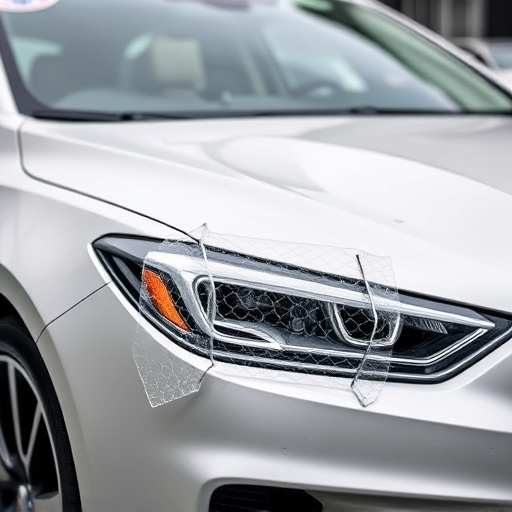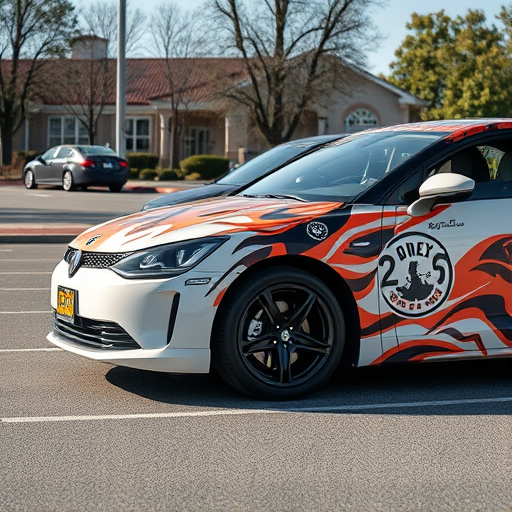Event graphics design, while enhancing visual appeal, traditionally has a significant environmental impact due to paper waste and energy-intensive production. To combat this, designers are increasingly adopting sustainable alternatives like digital displays, recycled materials (e.g., Polypropylene Film), and eco-conscious vehicle enhancements. This shift towards sustainability, from optional consideration to necessity, includes using natural materials like bamboo and hemp, upcycling, and implementing durable finishes with scratch protection. These innovations not only reduce environmental footprints but also improve event visuals' durability and appeal, fostering a more responsible and innovative event industry.
In today’s conscious world, sustainability is no longer a choice but a responsibility, especially in the vibrant realm of event graphics design. This article explores how eco-friendly practices can transform your events into green oases. We’ll delve into the environmental impact of event visuals, uncover sustainable materials, and present creative strategies to minimize waste. Embrace these tips to ensure your events leave a positive, lasting impression on both attendees and the planet.
- Understanding the Impact of Event Graphics on Sustainability
- Eco-Friendly Materials and Resources for Event Design
- Creative Strategies to Minimize Waste in Event Visuals
Understanding the Impact of Event Graphics on Sustainability

Event graphics design plays a significant role in shaping the visual impact and overall experience of any event. However, its potential to influence sustainability often goes unnoticed. From printed materials to decorative displays, every element contributes to an event’s carbon footprint. Understanding this impact is the first step towards creating more eco-friendly practices within the industry.
The environmental consequences of conventional event graphics are far-reaching. Paper waste, plastic overlays, and energy-intensive production methods are common issues. By embracing sustainable alternatives, such as digital displays, recycled materials, and car customization using eco-conscious vehicle enhancement services (like premium automotive services), designers can reduce these negative effects. This shift not only benefits the planet but also contributes to a more responsible and innovative approach in the event planning sector.
Eco-Friendly Materials and Resources for Event Design

In the realm of event graphics design, sustainability is no longer an optional consideration but a necessity. Event planners and designers are increasingly seeking eco-friendly materials and resources to reduce their environmental impact. One significant shift is towards using recycled, recyclable, or biodegradable materials for displays, backdrops, and signage. For instance, professional PPF (Polypropylene Film) installation can offer durable and reusable graphics while ensuring scratch protection for designs. This versatile material is not only efficient but also environmentally friendly, as it can be recycled multiple times without losing quality.
Additionally, heat rejection technologies are being integrated into event graphics to mitigate the heat generated by lights and other sources, thereby reducing energy consumption. Eco-conscious designers are also exploring natural materials like bamboo, hemp, and recycled textiles for backdrops and stage decorations, which not only enhance the aesthetics but also contribute to a greener environment. These innovations in event graphics design not only cater to professional events but also encourage sustainability practices among event organizers, fostering a more responsible and environmentally conscious industry.
Creative Strategies to Minimize Waste in Event Visuals

In the realm of event graphics design, minimizing waste is no longer an optional consideration but a core principle for eco-conscious designers. Creative strategies such as upcycling materials, adopting digital solutions to reduce paper waste, and utilizing reusable display components significantly cut down on environmental impact. For instance, instead of discarding banners and posters after events, designers can repurpose them in other campaigns or transform them into art pieces for donation, giving them a second life.
Additionally, choosing high-quality finishes that offer scratch protection extends the lifespan of event visuals. Techniques like ceramic window tinting not only add aesthetic value but also serve as a protective layer, ensuring graphics remain vibrant and intact even under demanding conditions. These eco-friendly practices not only contribute to sustainability but also enhance the overall visual appeal and durability of event displays.
Incorporating sustainability into event graphics design is not just an eco-conscious choice, but a strategic one. By understanding the environmental impact of event visuals and employing creative strategies, designers can significantly reduce waste and minimize their carbon footprint. Utilizing eco-friendly materials and resources not only benefits the planet but also adds a unique, authentic touch to events, appealing to environmentally aware audiences. With these tips, event planners and designers can lead the way in making events more sustainable, ensuring a greener future for the industry and the planet.














